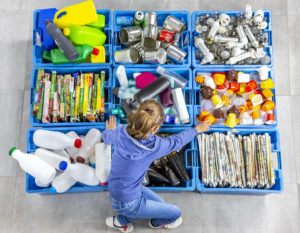
Dog trainer Michelle Chan provides expert tips on how to ensure your kids and your new pet get along.
Finding a pet that’s a good fit for your family is crucial (see Adopting a Dog in Singapore for more on this, mamas), but when you’re ready to bring Fido home to the kiddies there are some key steps to ensure a smooth transition for everyone. Please welcome dog trainer Michelle Chan with some timely expert advice, and tune in tomorrow for her tips on introducing a new baby to your pet.
Having a dog in the family can be very enriching for everyone in the family, especially the children! Not only can a family dog help with lessons on being kind to animals, they also provide a unique kind of companionship to children. There are many stories of dogs helping kids to gain confidence, encouraging children to speak, and offering comfort to kids to share their feelings.
However many tales of families with dogs have also, sadly, gone wrong, with children ending up with injuries from dog bites, or dogs being given up when they are unable to adapt to the addition of a new baby to the household.
First impressions count and we can certainly take a couple of easy steps when a new dog is introduced to the family, or a new baby to a current family dog, to help the relationship between your child and their new canine pal start on a good note for a safe and happy life together.

1. Teach gentleness
Children can be very rough when they interact with dogs, patting them hard and squeezing them in tight hugs. Many dogs tolerate this manhandling but are actually very stressed by it! Protect your child from being bitten by an anxious dog – and your dog from being bullied – by teaching kids the appropriate way to pat and handle dogs, for example, patting gently on the dog’s body instead of the head, and not sitting on or throwing things at the dog.
2. Games are fun for everyone
Show kids all the fun and appropriate games they can play to bond with their dog! Teach them how to play hide and seek (where the child hides and calls the dog, rewarding the dog with treats for finding him), how to send the dog on a treasure hunt (kids can leave treats and toys around the house for the dog and encourage the dog to find them), and even create an indoor obstacle course for their dog (kids can use treats and get the dog crawling under tables, weaving through chair legs and going through play tunnels). However: chasing games are inappropriate as dogs often nip and hurt children running after them.

3. Don’t snatch
Teach children not to take things from the dog, even if what the dog is chewing on is their shoe or book! Many dogs will guard whatever they have in their possession by growling, snapping and even biting. Instead, have your child call for parental back-up when the dog does anything naughty. On the other hand, children can give things to dogs, like treats and toys! Dogs quickly form positive associations with children this way.
4. Everyone benefits from learning responsibility
Assign simple everyday doggy tasks to kids, like dishing out kibble into a bowl or letting kiddos walk the dog (ideally on two leashes, one of which you hold on to for safety). This promotes regular interaction between children and the dog, and encourages a sense of responsibility. We’ve seen kids little more than a year old helping out with these tasks!

5. Become a junior trainer and get a best friend in the bargain
Teach kids how to train simple manners like “sit” using treats, and how to use these manners to get out of tricky situations, like stopping the dog from jumping up on them. For aspiring junior trainers, teaching fun tricks like “roll over” can help both the child and the dog enjoy each other’s company more.
Parents should always remember to supervise, supervise, supervise! Parental supervision is key to ensuring a happy and harmonious relationship between your child and the family dog. A little preparation, a few ground rules from mum and dad, and some training (for both your four-legged and two-legged charges) will go a long way in nurturing a lasting friendship between canine and child.
Thanks Michelle! Make sure to also check out Part 2: Introducing a new baby to your pet.






 View All
View All





 View All
View All









 View All
View All






